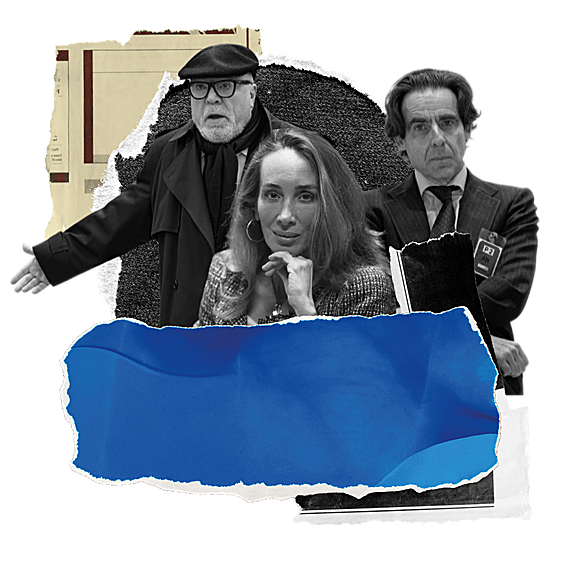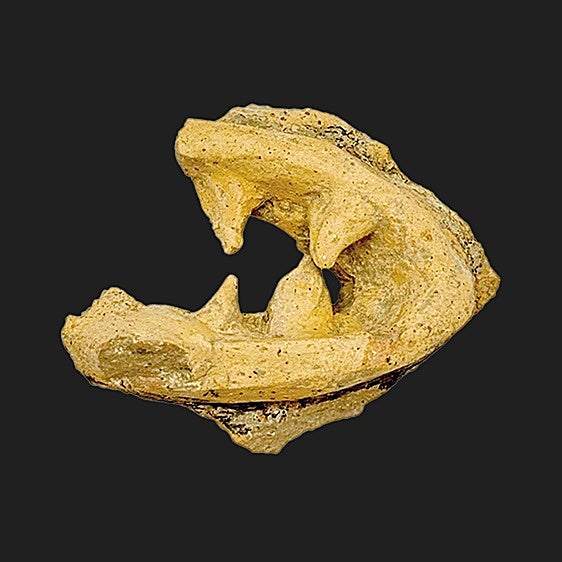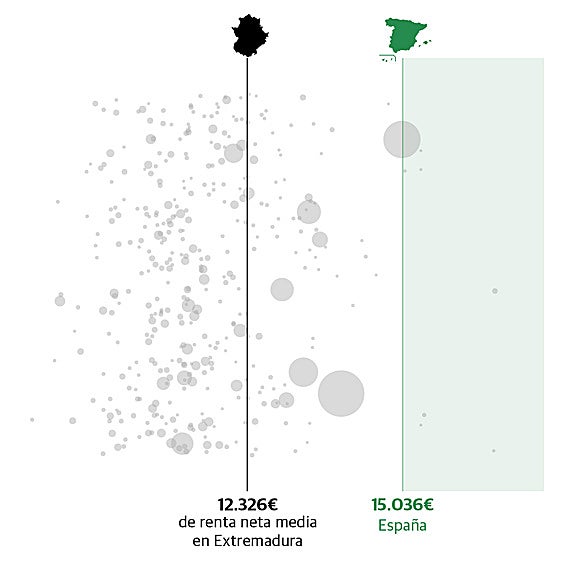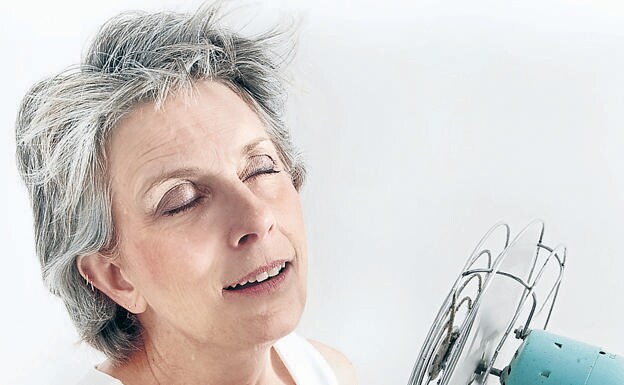'It feels like being on fire from the waist up'
Hot flushes. ·
Suddenly feeling hot and sweaty is a common symptom of the menopause, experienced by around 75% of womenELENA MARTÍN
Friday, 16 September 2022, 12:53
Iwould fall asleep and half an hour later I'd wake up sweating, with my heart racing and a burning feeling from my waist up to my head. It was like feeling on fire inside and it could happen up to ten times a night."
That is how Belén, a 56-year-old from Madrid, describes her symptoms. Her menopause began early, when she was 38, and she has suffered from hot flushes ever since. This is a common symptom when menstruation ceases.
-
At night Put several layers on the bed so you can add or remove them as necessary. Natural fibres are best.
-
Layers of clothes When you go out in winter, wear several layers of clothes and then you can take some off when the hot flushes begin.
-
Healthy diet Women who are overweight tend to suffer more from hot flushes, so eat healthily. The Mediterranean diet is best.
-
Don't smoke Smoking makes menopause symptoms worse. Give it up, if you can.
-
What to avoid Alcohol, spicy foods, tannin and caffeine.
-
Tepid showers Showering in tepid water, not hot, can help to prevent hot flushes.
"I have been out in my garden in a bra in the depths of winter to get some relief, and I didn't feel cold," she says.
The hot flushes also affected her sleep. "I was like a zombie at work and was always in a bad mood. They say hormonal changes affect your temperament but with me I think it was the lack of sleep, because it went on for two years," she adds.
Belén tried all types of natural remedies. "I bought linseed, soya supplements, isoflavones...I spent most of my salary in the health food shop and nothing helped at all. So, in desperation, I went to a gynaecologist," she says.
The doctor prescribed sleeping tablets, but they had no effect so then she was given other medication which she is still taking. She has felt a lot better since then, but does still get hot flushes occasionally.
Belén is one of the 75-85 per cent of women who suffer from hot flushes in the menopause.
"In general, the hot flushes last from two to four years but around ten per cent of women suffer from them for five years," says gynaecologist and obstetrician Katerina López Tejerina.
She explains that their intensity, frequency and duration are very variable, although they generally last between two and four minutes, and when they occur at night and are intensive, they can cause changes in sleep pattern, headaches, fatigue and irritability, as in Belen's case.
The cause
There are several theories about what causes hot flushes.
"Nowadays, we believe the absence of or reduction in oestrogens - sexual hormones which stop being produced in menopause - could alter the normal functioning of the thermoregulatory centre of the hypothalamus, the structure of the brain that regulates physiological functions such as body temperature, appetite, thirst, the sleep-awake cycle and sexual behaviour, among others," says Dr López Tejerina.
Several pieces of research have associated different risk factors with hot flushes. Some of these cannot be modified, such as genetics, race or chronic illnesses, but others such as excess weight and obesity, smoking and a sedentary lifestyle can. For that reason, "lifestyle changes such as regular aerobic exercise, weight loss and giving up smoking are beneficial options for the prevention and treatment of hot flushes," the doctor says.
Cold drinks and avoiding spicy food, caffeine, tannin and alcohol can also alleviate the symptoms in some women.
Treatments
If the symptoms are mild, non-pharmacological treatments are recommended to start with. There are several alternatives, including phytoestrogens - substances of vegetable origin with oestrogenic effects, such as isoflavones (soya, tofu, red clover), lignans (fruits, vegetables, cereals and seeds) and coumestans (alfalfa), medicinal herbs and relaxation-rhythmic breathing techniques which have been proven to be effective as a complementary treatment.
"One thing to bear in mind is that phytoestrogens and certain herbal medicines are not suitable for women who have had breast cancer, and acupuncture and magnet therapy are not recommended," says Dr López.
"If the symptoms persist or intensify," she adds, "you could consider starting hormone therapy. It's best to begin with the minimum effective dose and re-evaluate the treatment in four or six weeks, depending on how the symptoms have evolved and possible adverse effects. We don't recommend continuing hormonal treatment in the long-term because of the potential risks associated with it, such as venous thromboembolism, cognitive deterioration and the increased risk of breast, ovarian and endometrial cancer," she explains.



